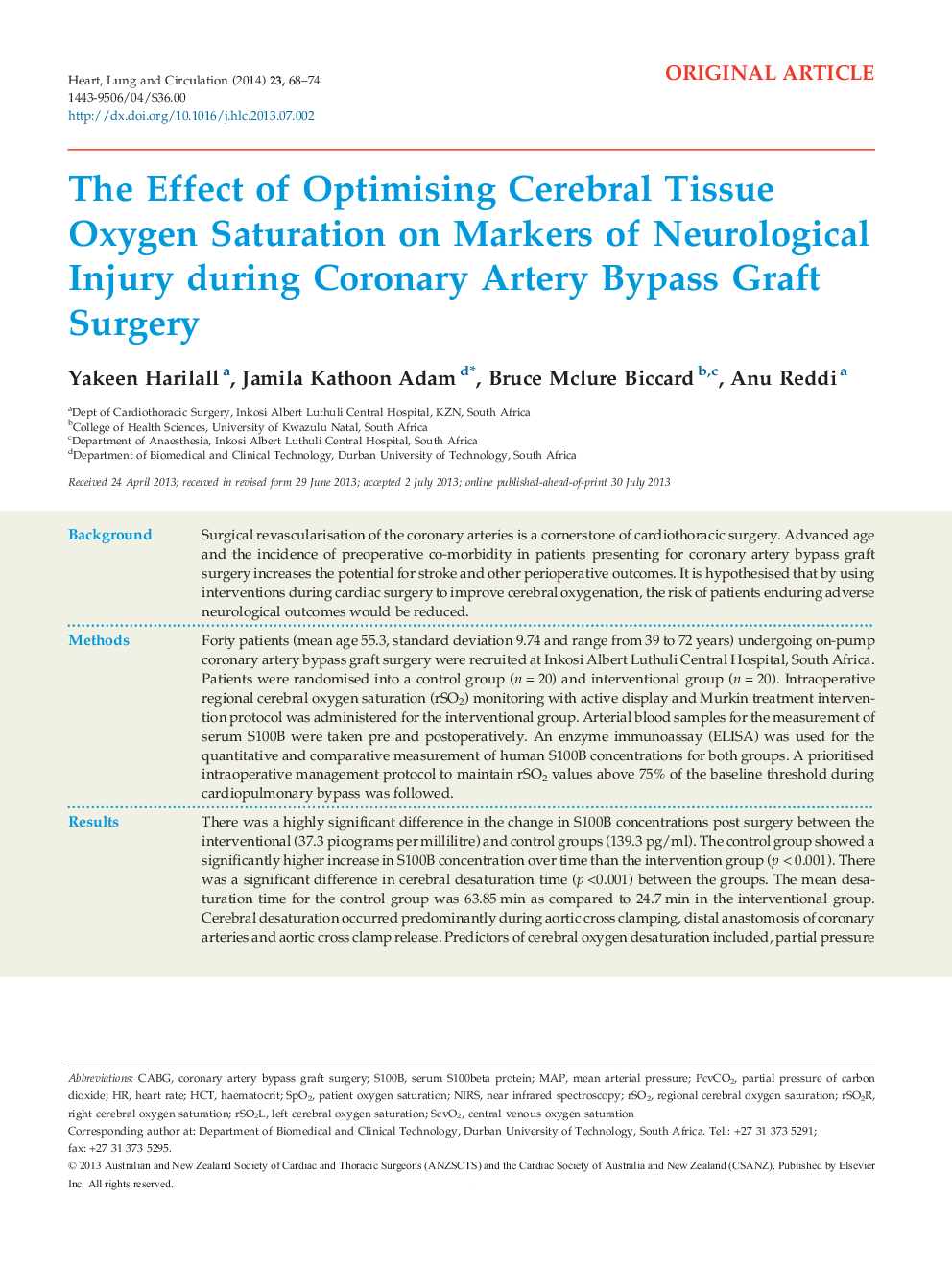| کد مقاله | کد نشریه | سال انتشار | مقاله انگلیسی | نسخه تمام متن |
|---|---|---|---|---|
| 2918420 | 1175693 | 2014 | 7 صفحه PDF | دانلود رایگان |
BackgroundSurgical revascularisation of the coronary arteries is a cornerstone of cardiothoracic surgery. Advanced age and the incidence of preoperative co-morbidity in patients presenting for coronary artery bypass graft surgery increases the potential for stroke and other perioperative outcomes. It is hypothesised that by using interventions during cardiac surgery to improve cerebral oxygenation, the risk of patients enduring adverse neurological outcomes would be reduced.MethodsForty patients (mean age 55.3, standard deviation 9.74 and range from 39 to 72 years) undergoing on-pump coronary artery bypass graft surgery were recruited at Inkosi Albert Luthuli Central Hospital, South Africa. Patients were randomised into a control group (n = 20) and interventional group (n = 20). Intraoperative regional cerebral oxygen saturation (rSO2) monitoring with active display and Murkin treatment intervention protocol was administered for the interventional group. Arterial blood samples for the measurement of serum S100B were taken pre and postoperatively. An enzyme immunoassay (ELISA) was used for the quantitative and comparative measurement of human S100B concentrations for both groups. A prioritised intraoperative management protocol to maintain rSO2 values above 75% of the baseline threshold during cardiopulmonary bypass was followed.ResultsThere was a highly significant difference in the change in S100B concentrations post surgery between the interventional (37.3 picograms per millilitre) and control groups (139.3 pg/ml). The control group showed a significantly higher increase in S100B concentration over time than the intervention group (p < 0.001). There was a significant difference in cerebral desaturation time (p <0.001) between the groups. The mean desaturation time for the control group was 63.85 min as compared to 24.7 min in the interventional group. Cerebral desaturation occurred predominantly during aortic cross clamping, distal anastomosis of coronary arteries and aortic cross clamp release. Predictors of cerebral oxygen desaturation included, partial pressure of carbon dioxide (pCO2), temperature, pump flow rate (LMP), mean arterial pressure (MAP), haematocrit, heart rate (HR) and patient oxygen saturation (SpO2).ConclusionMonitoring brain oxygen saturation during on-pump CABG together with an effective treatment protocol to deal with cerebral desaturation must be advocated.
Journal: Heart, Lung and Circulation - Volume 23, Issue 1, January 2014, Pages 68–74
